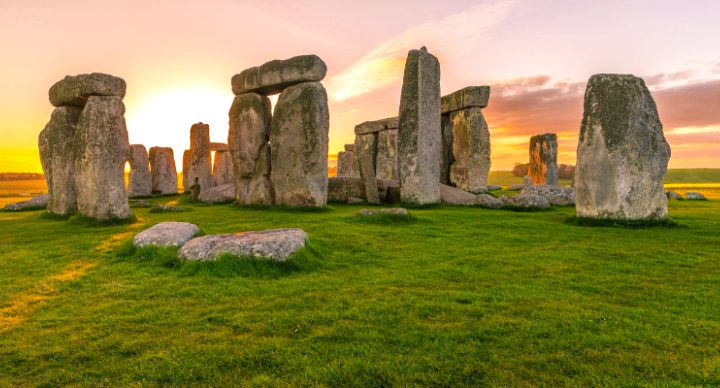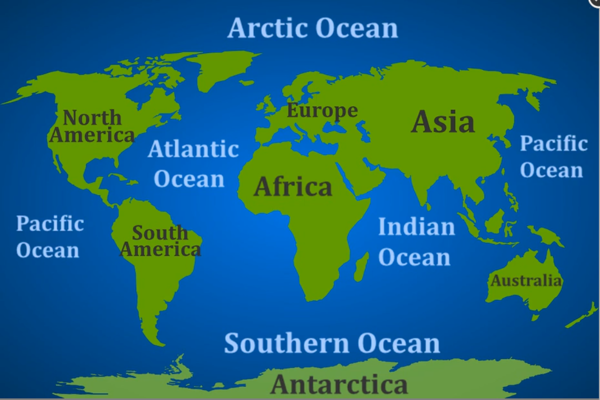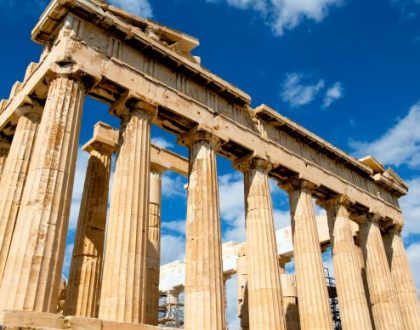Ancient Civilizations

Course Features
Course Duration: Full Year
Category: History/Social Studies, Middle School
Assessment: Lesson Practice, Unit Exams, Mid-Term Exam, Final Exam
Language: English
Course Details
Course Overview
The Acellus Ancient Civilizations course leads students on a journey through the ancient world, giving them a basic understanding of the field of geography as well as the beginnings of civilization as we know it. Ms. Mitko imparts to students a contagious excitement about history, about what life was like for those who preceded us, about the contributions our forefathers made to the world, and about how those contributions have impacted life in the present day.
Course topics include:
- Basic Principles of Geography
- The Neolithic Age
- Mesopotamia
- Egypt's Old, Middle, and New Kingdoms
- Christianity, Judaism, and Islam
- Africa
- The Asian Sub-Continent, the Indus River Valley, Hinduism, and Buddhism
- China and its Dynasties
- Japan, Greece, and Myths
- Alexandria
- The Rise and Fall of the Roman Empire
- The New World - Olmecs, Mayans, and Incas
- Europe, Feudalism, the Middle Ages, and the Renaissance
Sample Lesson - Continents and Oceans
 This course was developed by the International Academy of Science.
Learn More
This course was developed by the International Academy of Science.
Learn More
Scope and Sequence
Unit 1 To begin their study of ancient civilizations, students develop an understanding of the world we live in. They study the continents and oceans, latitude, longitude, and global address, hemispheres, climate zones, and parts of a map. They explore three types of maps - physical, political, and thematic - and the five themes of geography. Unit 2 Students next investigate archeology. They gain understanding of primary and secondary sources. They discuss theories of the origins of the species, and begin to explore the Paleolithic or Old Stone Age, followed by the transition to the Neolithic Age, how the climate changed, and what it was like to live during the Neolithic Age. They meet Oetzi, the iceman of the Alps. Unit 3 In this unit, students take a look at how time is documented, at how to read a timeline, and at how we refer to different periods of time. They discuss the characteristics of a civilization. They investigate a political map of the Middle East. They study the geography of Mesopotamia. They consider the benefits of flooding. They examine Cueniform - the first system of writing. They explore government and polytheism. They learn about Hammurabi's code of law and about the contributions made by Mesopotamia to the world. Unit 4 With a focus on Egypt, students study its geography, its hieroglyphics, its social pyramid, and its religious practices. They explore the Old Kingdom and the pyramids, the Middle Kingdom, and the New Kingdom, which was begun by Ahmose. They further investigate the lives of Hatshepsut and Akthenaton, King Tut, and Ramses II. They discuss trade in the Eastern Mediterranean. They examine the Kush Civilization and Egypt. Unit 5 Students explore the religions of the Ancient world, beginning with monotheism and its impact, Abraham and the Covenant God made with him, and the Exodus of the Jewish people from Egypt. They study the Jewish kings, the Roman diaspora, what happened after the Roman diaspora, the basic beliefs of Judaism, and what Judaism is like today. They probe the Christian scriptures and investigate the birth of Jesus, his parables, his teachings, and his death. They examine the basic beliefs of Christianity, what Christianity is like today, the early Christian Church, and the persecution and the legalization of Christianity by Rome. Next they take a look at Islam and Judaism. They learn about the way of life in Arabia. They discuss the prophet Muhammad, his visit with the Angel Gabriel, and the way he gained followers. They explore the five pillars of Islam, and what Islam is like today. They compare and contrast Judaism, Christianity, and Islam. Unit 6 Continuing their study of ancient religions, students discuss the expansion of Muslim rule. They explore the rise and fall of the Umayyad, Umayyad's secure control, and the Islamic Golden Age of the Abbasid. Unit 7 Students next shift their focus to Africa and study its geography, its vegetation, and its religious practices. They examine the role of oral tradition. They discuss family, labor, commerce, and slaves. They explore the West African empires, the trans-Sahara journey, supply and demand, and the gold and salt trade. They learn about the Niger River and the spread of Islam, Mansa Musa and the Mali Empire, and the Arabic Language and culture in West Africa. Unit 8 In this unit students turn to the Asian sub-continent and explore a political map of this region, the geography of India, its monsoons, and the Indus River Valley civilization. They study Hinduism, including Brahman and multiple gods, dharma and caste, karma, samsar, and moksha. They investigate the untouchables and civil rights, and what Hinduism is like today. Turning to Buddhism, they examine Siddhartha Gautama's life, the Four Noble Truths, the Eightfold Path, the teaching of the Buddha, and what Buddhism is like today. Following this unit students are presented with the Mid-Term Review and Exam. Unit 9 China is the focus of this unit, where students begin by studying a political map of Asia, Chinese isolation, and civilization on the Huang He. They explore the Shang Dynasty and ancestor worship, the Mandate of Heaven and the Zhou Dynasty, the warring states, and the birth of philosophies. They discuss Daoism, legalism, and Confucianism, and look at the Qin Dynasty and the army of terra cotta warriors. They investigate the Great Wall of China, the Han Dynasty, and the use of exams to select leaders in government and the military. They also consider how the establishment of the Silk Road initiated global trade, global communication, and the global spread of disease. Unit 10 Turning next to Japan, students study its geography, followed by the period from early Japan to Fujiwara. They explore Chinese and Korean influence on Japan and how Buddhism was implemented there. They investigate Japanese art and theater. They consider Japanese literature, specifically looking at the Tale of the Genji. They examine feudal Japan, the decline of feudalism, and Japanese isolation. Unit 11 Students begin their study of Greece by delving into how the Greeks used myths to explain the unexplainable, how myths contain seeds of truth from history, how they are used to teach behaviors, and what myths are like in today's world. Students explore Greek geography, the influence of the Phoenicians on Greece, and the influence of geography in trade. They investigate pre-classical Greece, including the Minoans and the Myceneans. They discuss the Dark Ages. They learn about the three types of government that the Greeks went through as they evolved their government to the democratic system. They consider democracies versus republics, Athenian democracy, and how the democracy in ancient Athens compares with the democracy in the present-day United States. Unit 12 Continuing their focus on Greece, students examine Hoplites, Athens, and Sparta. They study the Persian War. They explore the golden age of Athens. They investigate the Delian League versus the Aegean League in the Peloponnesian War. They examine the life of Alexander the Great. They scrutinize the Hellenistic Age and the contributions that the Greeks made to the world. They get to know the Greeks who built and lived in Alexandria, as well as the Greeks who became the first historians. Unit 13 Students next investigate the Roman Empire, beginning with the geography of Rome. They look at how the Greeks and the Etruscans influenced early Rome. They consider some of the early influential Romans. They study Cincinnatus. They scrutinize the Roman Republic, including its Tripartite system, minority rights and the rule of law, and the Punic wars. They explore the rise and fall of Julius Caesar. They analyze the weakening of the Republic, and the rise and fall of the Roman Empire. Unit 14 Going on with their study of Rome, students investigate Augustus Caesar, Rome's first emperor. They probe what life was like in Rome, including Pax Romana, roads, and communication, as well as Roman citizenship, and going to school in ancient Rome. They consider Roman architecture, Roman engineering and art. They explore Christianity in Rome. They next learn about the division of the Empire and the collapse of Rome. They discuss the achievements of Ancient Rome. They scrutinize the Byzantine Empire and whether it was actually Roman. They survey the reign of Justinian and Theodora. They examine the East-West Schism. Unit 15 Students turn next to the New World. They look at its isolation and at the Olmecs. They investigate Mayans and their geography, their cities, warfare, and advancement. They examine the Aztecs and Incas and their geography. They study the cliff dwellers, the mound builders, and the destruction of American Empires. Unit 16 Ancient Europe is the final area students examine in this course. They review a political map of Europe and its geography. They explore the collapse of Rome and the development of feudal Europe. They learn about the feudal social pyramid. They study the role of the Catholic Church and the crusades. They investigate the Magna Carta which limited the power of the King. They consider the Black Death and its effect on Europe. They discuss the end of the Middle Ages. They examine how culture was reborn through the Renaissance. They contemplate how Martin Luther led the Protestant Reformation. Following this unit, students are presented with the Final Review and Exam.
This course does not have any sections.
More Courses by this Instructor
56998




